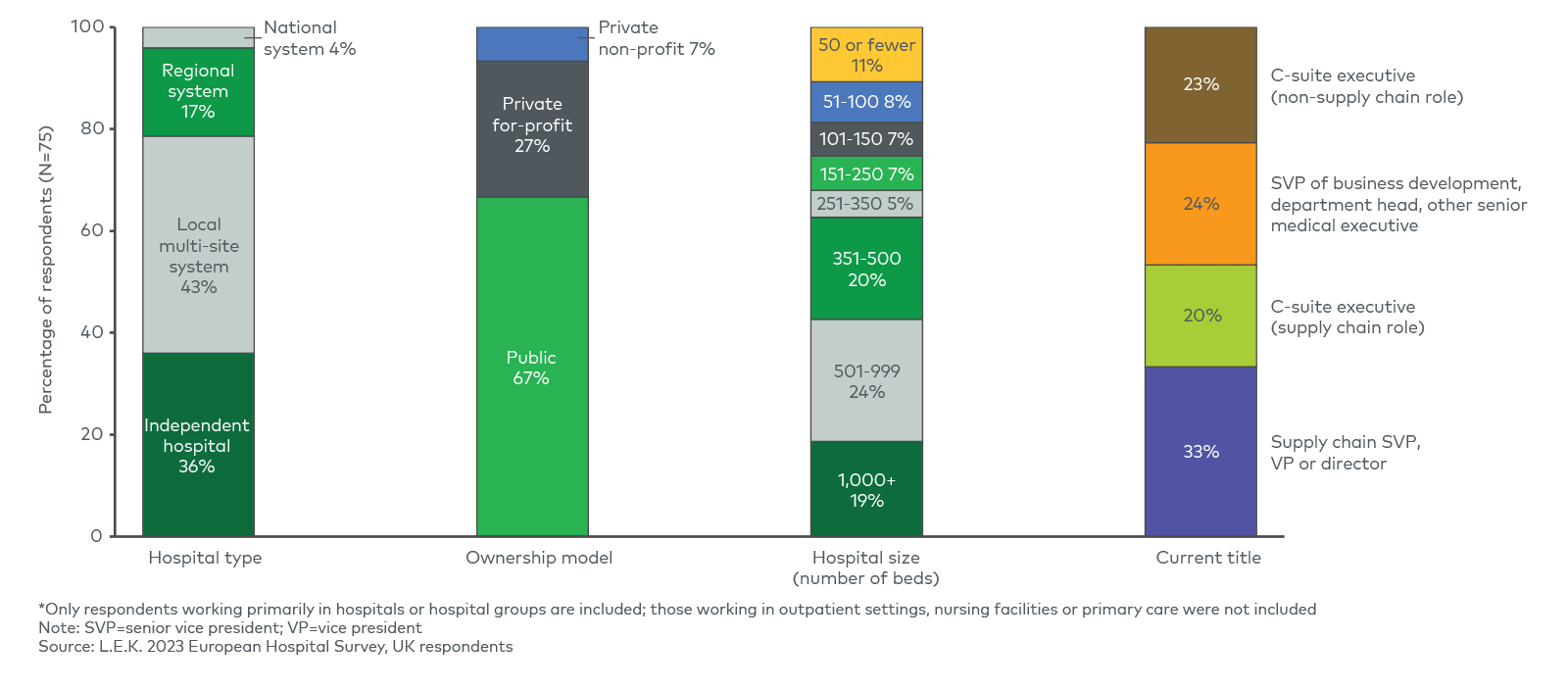Staffing
Staffing remains a priority for many public and private hospitals across the UK; despite past efforts by the government, however, the total number of NHS vacancies is still very high. The number of vacancies in NHS England in September 2022 was c.133,000, c.9,000 of which were for medical posts and c.47,000 of which were for nursing positions. Many hospitals are using internal ‘banks’ of staff or external agencies to fill some of the vacancies, but this is an expensive option that does not present a long-term solution.
In addition to this, junior doctors, nurses, physiotherapists and ambulance workers have pursued strike action this year due to pay and working conditions, which has resulted in an offer of a 5% pay raise for non-doctor, non-dentist NHS staff in England. In a 2022 survey of junior doctors in England, 45% said they struggled to pay their mortgage or rent, and c.30% had to use their overdraft to pay bills for consecutive months, illustrating how challenging the current pay conditions can be.
Accordingly, UK respondents in L.E.K.’s survey highlight staffing as one of the most important areas of strategic priorities for respondents. Indeed, c.80% of respondents consider having flexible clinical staffing moderately to very important, and c.75% consider attraction and retention of nurses and physicians similarly important. Public sector respondents consider attraction and retention of both physicians and nursing staff more important than their private hospital counterparts do.
Quality of clinical and patient care
Continuing to improve quality of care also remains an important focus for hospitals in the UK. Specific initiatives in this regard include reducing medical errors, reducing length of stay, improving infection control and reducing readmission rates. Of these, public hospital respondents consider the areas of patient length of stay, infection control and readmission rates more important on average than private hospital respondents do. By addressing staff retention in parallel with these areas, hospitals are more likely to achieve their long-term patient care goals.
In addition, many hospitals are considering expanding their footprint across the patient journey, such as by acquiring or partnering with imaging centres, GP (general practitioner) practices, diagnostic centres and pathology labs.
In order to diversify or expand their patient reach, some hospitals in the UK are considering acquisitions, partnerships or organic growth options.
UK respondents view acquisition or partnership with an imaging centre and with a GP practice as the two most likely growth strategies to pursue over the next three years, with c.50% of respondents rating the pursuit of these options as moderately to very likely in both the public and private sectors (see Figure 2). Imaging and GP consultations often occur prior to hospital treatments, which indicates the desire for some hospitals to extend their reach ‘upstream’ along the patient journey, to aid with improved triage and provide greater visibility over patient flows into their facilities. In addition, respondents also highlight creation of specialist diagnostic centres as a likely growth option over the next three years — here, similar motivations are likely to be in play.















